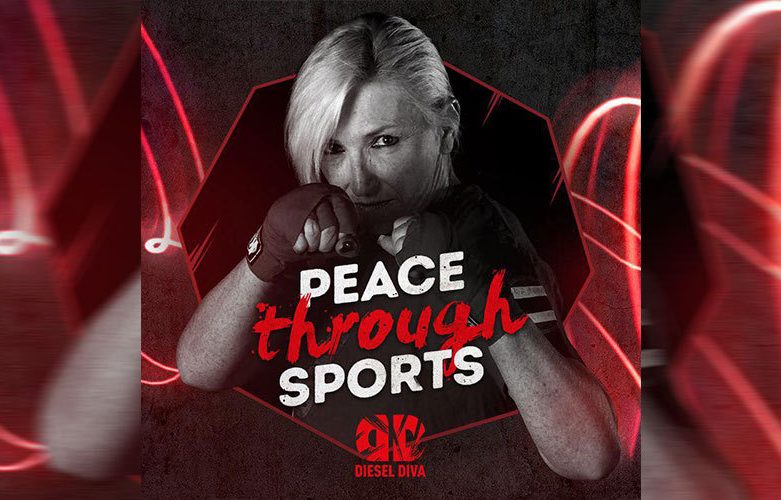Published by: https://zafigo.com Inspiring Women through travel
By Karl R. De Mesa on July 2, 2020
The Malaysian government has allowed for domestic travel to begin again starting 10 June 2020. We urge you to maintain social distancing, upkeep your personal hygiene, and adhere to all SOPs imposed to prevent the spread of COVID-19. If you’re still not sure about travelling during this time, we hope you keep Zafigo as a source of inspiration for your future travels.
Beverly Aisha Roach has been to war.
In fact, as a former captain in the Canadian military, she’s been deployed in some pretty rough places, conflict zones like Afghanistan and Sudan. Keeping people safe has been her life and, after her career as a soldier, she left the service for a new calling as a security consultant for international institutions and organisations.
75 countries later, she now calls Manila her home, working for a UN-affiliate, and spreading the benefits of martial arts and combat sports in her “Peace Through Sports” movement — an ethos embodied in her brand: The Diesel Diva (a line of merchandise that includes training apparel and combat sports gloves).
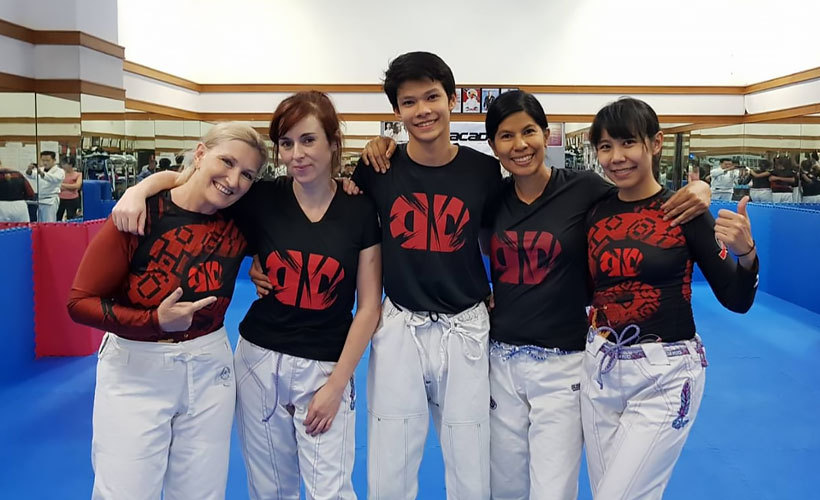
But bringing the aspects of her work to the vulnerable and the susceptible sectors remains her passion. Women are her top priority. Women are often targets because of so many factors, including a culture of casual harassment, bullying, and often impunity with regards to their boundaries, but also because in plenty of cultures women’s bodies are still thought of as easy to violate, something cavalierly objectified.
What Roach teaches is an amalgam of a women’s self-defence course based on the Street-Smart Self-Defense Program (by Cape Town-based martial artist James Smart) and the Gracie Women Empowered course developed by Gracie Jiu-Jitsu. Bev is an instructor of both programmes and introduces participants to techniques and concepts that help women in real-life scenarios.
Here’s some introductory advice by the 60-year-old war veteran and security expert on how to better understand and ensure your safety as a woman.
Enforce your boundaries
What it is
“Boundary-setting is really the first line of self-defence. As women, many of us will allow people to get into our space for a number of reasons. We’re not comfortable with confrontation. We’re afraid to look silly, and we’re afraid to offend people. We don’t want to say to somebody: take your hand off my leg, please, just to have them aggressively respond with ‘But I wasn’t doing anything!’. We go into denial when someone says something inappropriate. We’ll think ‘that’s what I heard but that can’t be what he meant’.”
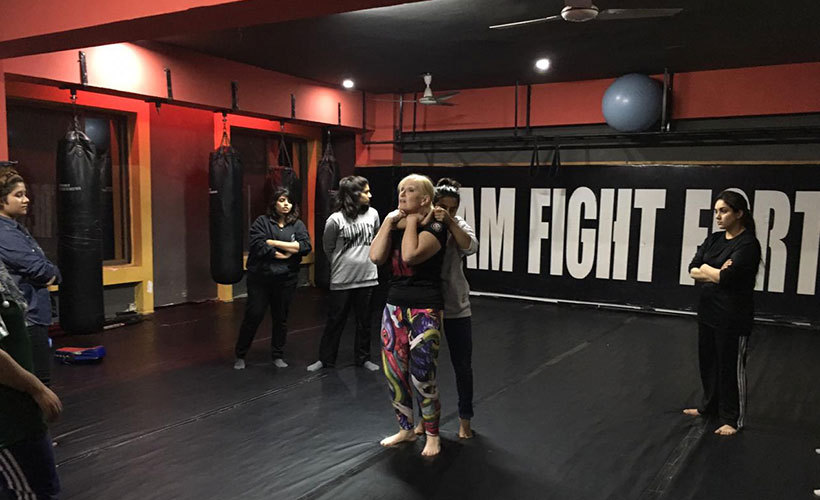
Recognise it
Someone gets into your space and you don’t feel good about it? Someone says something and it makes you feel awkward? Trust your instinct. And if it doesn’t feel good, you can put distance between yourself and the uncomfortable situation.
Boundary-setting extends far beyond someone approaching you or entering your space. It can breach psychological, verbal, emotional, and physical boundaries. I like the analogy of boundary setting being an internal compass with two points on it: Yes and No. If it’s yes, then it’s easy. Maybe I do want to sit a little closer to this person, engage with them. If our compass is not on yes, then it’s on NO. And it’s okay for us to withdraw and stop someone from crossing the boundary. Boundary setting is a big deal and we need to teach young girls (and young boys) about this.
What to do
When setting boundaries, prepare yourself for the response. Be prepared for somebody to have an aggressive response to your boundary setting. They may deny it; they may call you crazy. But, and this is the important part, they won’t be touching your leg anymore.
Sometimes, perpetrators try subtler and more devious means to catch you alone. Here’s one woman’s cautionary tale: Having My Drink Spiked In Thailand: Lessons Learned
Be aware
What it is
“Our situational awareness has to be at a high level in new environments. But we are also not very good at situational awareness in places we are familiar with. Complacency, distraction, feeling safe, all make us forget to pay attention. We also let our guard down with people we know, and that’s when we can find ourselves in trouble.”
Recognise it
“Generally speaking, about 80 per cent of sexual assaults or rapes are committed by non-strangers. That could be family, co-workers, a service provider of some kind.”
What to do
“You need to be willing to put up boundaries with acquaintances or anybody you don’t feel comfortable around. If you brush against me and I don’t say, “I’m sorry, please don’t touch me again. I’m really not comfortable with that,” then next time, you’ll feel like maybe you can brush a little further. As soon as we make it clear what our boundary is, if they still continue to ignore your boundaries, then that is a big red flag.”
Manage contact
What it is
We need to keep the potential danger at a distance from us so we can get away from it more easily. We don’t walk towards a fire unless we are fighting the fire. We hear shooting, we will go in the opposite direction. But when it comes to managing distance from people who might want to cause us harm in some way, we tend to not pay so much attention. Situational awareness is key. But what do we need to be aware of?
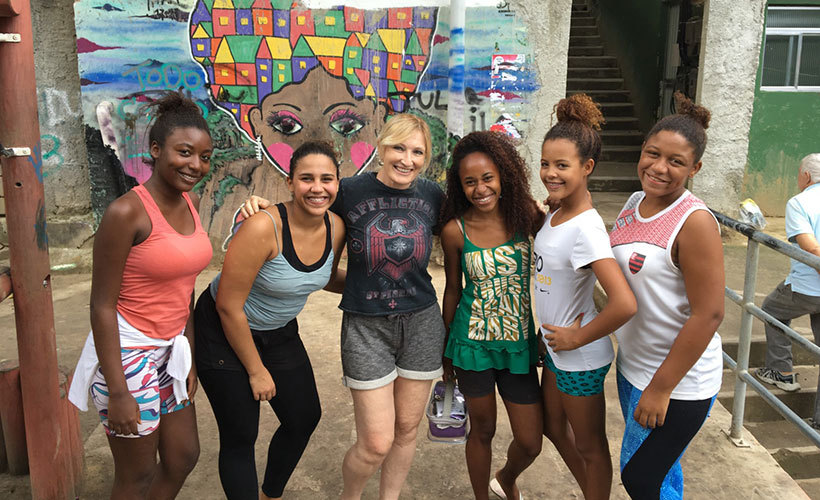
“Every scenario is different, so you’ll need to learn what we call ‘pre-attack indicators.’ How do you recognise someone as a bad guy?”
“A lot of people think that self-defence is always about engaging and fighting. When they get to my seminars, it’s always about, ‘How can you get away from that situation and put distance between yourself and the danger as soon as possible?’”
Recognise it
“Situational awareness is the key. Too many people these days, all genders, tend to go into their own little space, often on their cell phone. However, there are other distractions and in places where we feel comfortable, we often become complacent.”
“Somebody’s coming towards you. They’re asking, ‘Excuse me, ma’am, what time is it?’ If you say, ‘Stay where you are!’ they may look at you funny but stop and say ‘I’m sorry, I just want to know what time it is’. If they stay where they are (they comply), and apologise, that’s a good indicator they don’t mean you any harm. But if they get kind of get defensive and keep coming forward, now that’s an indicator that maybe they do have bad intentions.”
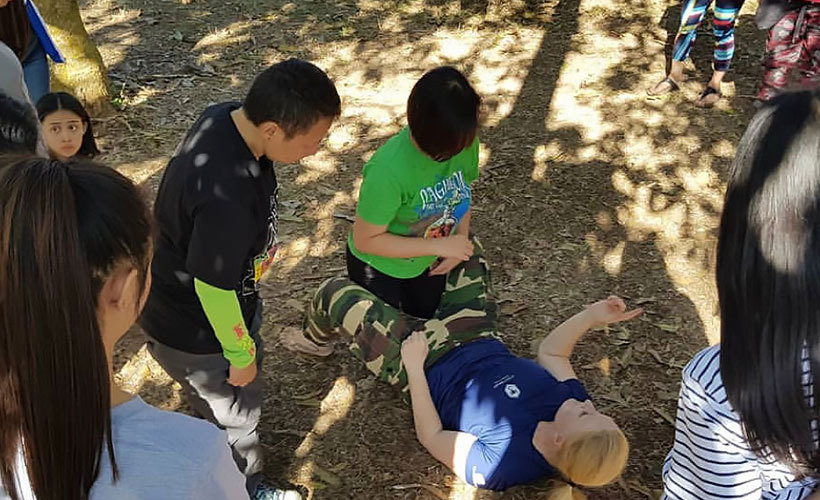
“I teach women about distance. Can this person reach me right now? People sometimes put their hands out and say ‘Stop!’ but their arms come out away from their body. Well, now you’ve decreased the distance between you so they may be able grab you.”
The best option is to identify the danger long before you have to engage. And that is situational awareness.
What to do
“We don’t want to get into a fight with someone who is likely a bigger, stronger opponent. If they get too close, make noise, draw attention to yourself, and start moving away from the potential danger. I want women to be situationally aware, to recognise danger before they get into any kind of altercation. Get away from the situation before it becomes a danger. You’ll hear people say you need to “stay alert, be calm, don’t panic” but it’s pretty hard to do that when you have someone in close trying to rob you or worse.”
“Because of adrenaline stress, people may experience the fight, flight, or freeze response. So, how do we overcome it? It really doesn’t take long to bring your heart rate back down. And then your brain can function better. Take a breath and at least one of you will be thinking a little more clearly.”
Situational awareness is everything. Here are some clichéd crimes that tourists face when travelling: Common Crimes By Country: Know What To Look Out For
Have a plan
What it is
“I recommend following a self-defence programme you feel comfortable with. Self-defence starts before physical contact. Avoidance, as mentioned, comes first, then managing the contact with a perpetrator, distance management, and verbal self-defence. Engaging in contact with a perpetrator may ultimately occur no matter what we have done to avoid it. The techniques need practice.”
Recognise it
“When we look at the Gracie Women Empowered videos, they demonstrate techniques for scenarios that are developed for women. If you go to a general self-defence class, these are situations that would normally be discussed, or at least it wouldn’t be part of the usual self-defence programme. “
What to do
“I usually talk to the women about jiu-jitsu and my love of the carotid artery. I show them a couple of videos showing a cross-collar choke and triangle choke and explain how the carotid is our friend. Compressing the carotid disrupts the blood flow, and doing it right can put somebody to sleep in about six seconds.”
“Then I ask, what exactly happens when you kick him in the nuts? Try to kick him in the nuts, which I point out is a small target that is tucked away, but you will also end up on one foot and probably off balance. He will more likely grab your foot and put you on the ground, where you will now be in a lot more trouble.”
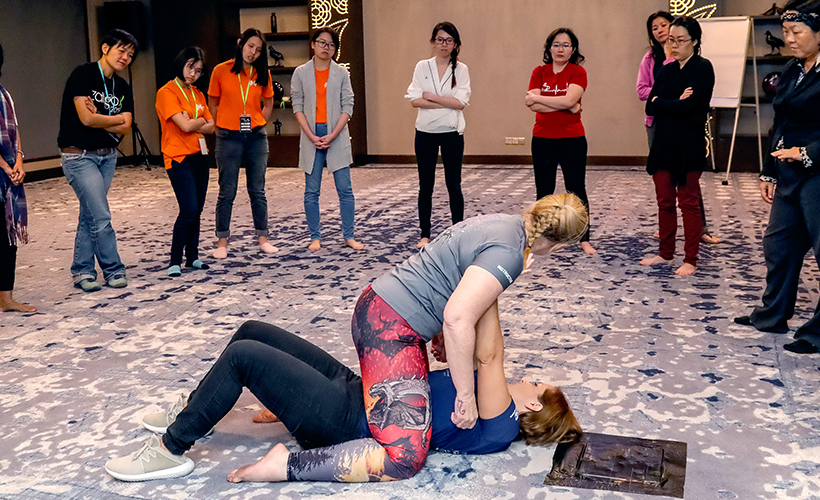
Overall, the key here is that you get some training in order to have some tools in your toolbox if you are in an altercation. Ultimately, your goal is to put distance between yourself and the perpetrator and get to a place of safety. For more information and to sign up to her seminars, contact the Diesel Diva on Facebook and Instagram. Beverly is currently cooperating with James Smart on a new online programme: Invisible Man Self-Defense. Bev and James are also developing a self-defence and security awareness programme for women in isolated Arctic communities.
*All photos courtesy of Beverly Aisha Roach
Follow Zafigo on Instagram, Facebook, and Twitter. Sign up to our bi-weekly newsletter and get your dose of travel tales, tips, updates, and inspiration to fuel your next adventure!
